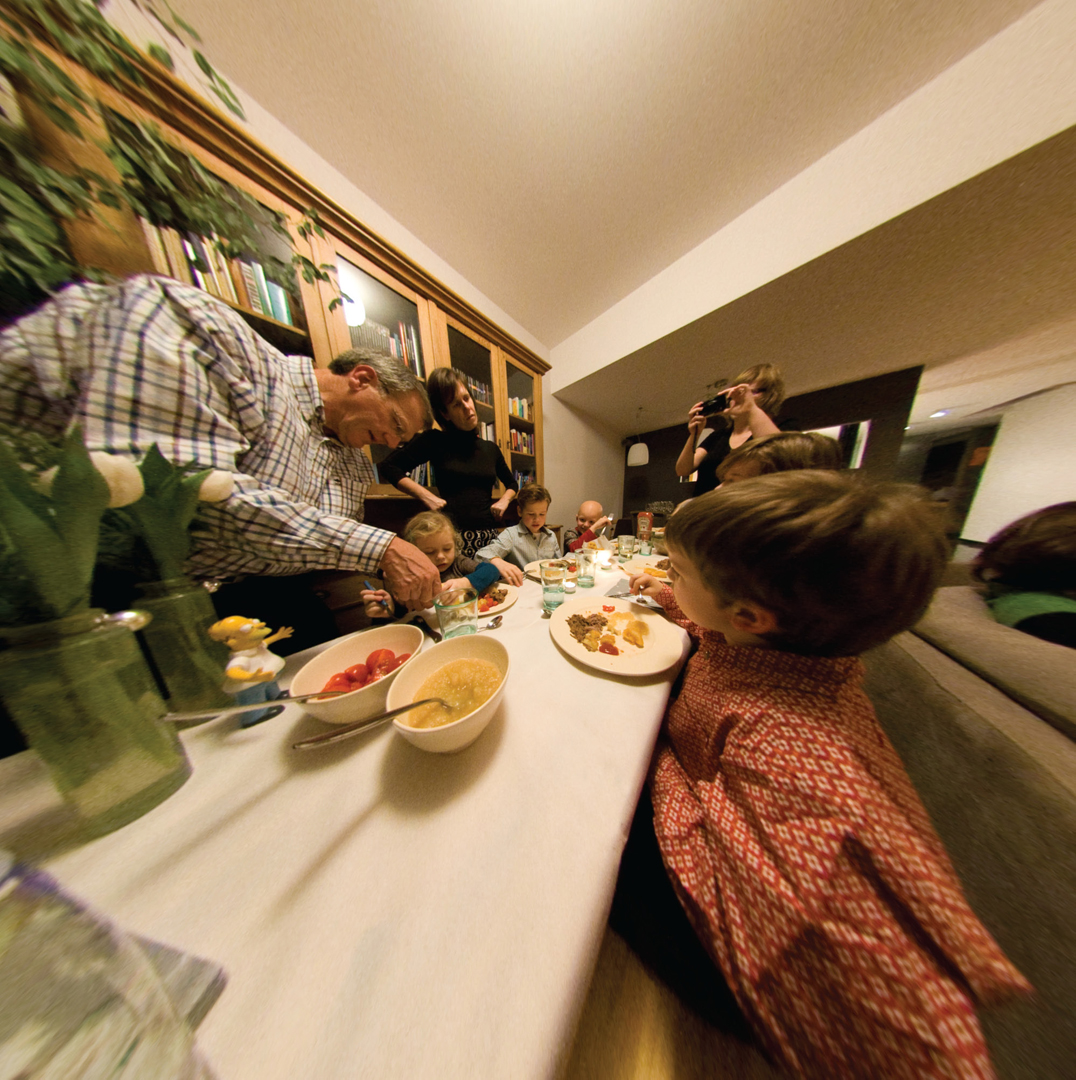“Optimizing content-preserving projections for wide-angle images” by Carroll, Agrawala and Agarwala
Conference:
Type(s):
Title:
- Optimizing content-preserving projections for wide-angle images
Presenter(s)/Author(s):
Abstract:
Any projection of a 3D scene into a wide-angle image unavoidably results in distortion. Current projection methods either bend straight lines in the scene, or locally distort the shapes of scene objects. We present a method that minimizes this distortion by adapting the projection to content in the scene, such as salient scene regions and lines, in order to preserve their shape. Our optimization technique computes a spatially-varying projection that respects user-specified constraints while minimizing a set of energy terms that measure wide-angle image distortion. We demonstrate the effectiveness of our approach by showing results on a variety of wide-angle photographs, as well as comparisons to standard projections.
References:
1. Agarwala, A., Agrawala, M., Cohen, M., Salesin, D., and Szeliski, R. 2006. Photographing long scenes with multi-viewpoint panoramas. ACM Trans. on Graph. 25, 3 (July), 853–861. Google ScholarDigital Library
2. Avidan, S., and Shamir, A. 2007. Seam carving for content-aware image resizing. ACM Trans. on Graph. 26, 3 (July), 10:1–10:9. Google ScholarDigital Library
3. Bradski, G., and Kaehler, A. 2008. Learning OpenCV: Computer Vision with the OpenCV Library. O’Reilly, Cambridge, MA.Google Scholar
4. Brown, M., and Lowe, D. G. 2003. Recognising panoramas. In International Conference on Computer Vision (ICCV), 1218–1227. Google ScholarDigital Library
5. Durand, F. 2002. An invitation to discuss computer depiction. In NPAR 2002: Second International Symposium on Non Photorealistic Rendering, 111–124. Google ScholarDigital Library
6. Flocon, A., and Barre, A. 1988. Curvilinear Perspective: From Visual Space to the Constructed Image. UC Press.Google Scholar
7. Forsyth, D. A., and Ponce, J. 2002. Computer Vision: A Modern Approach. Prentice Hall, August. Google ScholarDigital Library
8. Gal, R., Sorkine, O., and Cohen-Or, D. 2006. Feature-aware texturing. In Rendering Techniques 2006: 17th Eurographics Workshop on Rendering, 297–304. Google ScholarDigital Library
9. Heckbert, P. S. 1989. Fundamentals of texture mapping and image warping. Tech. Rep. UCB/CSD-89-516, EECS Department, University of California, Berkeley, Jun. Google ScholarDigital Library
10. Hilbert, D., and Cohn-Vossen, S. 1952. Geometry and the Imagination. Chelsea, New York.Google Scholar
11. Igarashi, T., Moscovich, T., and Hughes, J. F. 2005. As-rigid-as-possible shape manipulation. ACM Trans. on Graph. 24, 3 (Aug.), 1134–1141. Google ScholarDigital Library
12. Itti, L., Koch, C., and Niebur, E. 1998. A model of saliency-based visual attention for rapid scene analysis. IEEE Trans. Pattern Anal. Mach. Intell. 20, 11, 1254–1259. Google ScholarDigital Library
13. Kopf, J., Uyttendaele, M., Deussen, O., and Cohen, M. F. 2007. Capturing and viewing gigapixel images. ACM Trans. on Graph. 26, 3 (July), 93:1–93:10. Google ScholarDigital Library
14. Kubovy, M. 1986. The psychology of perspective and renaissance art. Cambridge University Press.Google Scholar
15. Lévy, B., Petitjean, S., Ray, N., andMaillot, J. 2002. Least squares conformal maps for automatic texture atlas generation. ACM Trans. Graph. 21, 3, 362–371. Google ScholarDigital Library
16. Longfellow, W. 1901. Applied Perspective for Architects and Painters. The Riverside Press.Google Scholar
17. Palmer, S. E. 1999. Vision Science: Photons to Phenomenology. The MIT Press.Google Scholar
18. Sadourny, R., Arakawa, A., and Mintz, Y. 1968. Integration of the non-divergent barotropic vorticity equation with an icosahedral-hexagonal grid for the sphere. Monthly Weather Review 96 (June), 351–356.Google ScholarCross Ref
19. Schaefer, S., McPhail, T., and Warren, J. 2006. Image deformation using moving least squares. ACM Trans. on Graph. 25, 3 (July), 533–540. Google ScholarDigital Library
20. Schenk, O., and Gärtner, K. 2004. Solving unsymmetric sparse systems of linear equations with pardiso. Journal of Future Generation Computer Systems 20, 3, 475–487. Google ScholarDigital Library
21. Sheffer, A., Praun, E., and Rose, K. 2006. Mesh parameterization methods and their applications. Found. Trends. Comput. Graph. Vis. 2, 2, 105–171. Google ScholarDigital Library
22. Snyder, J. P. 1985. Computer-assisted map projection research: U.S. Geological Survey Bulletin 1629. U.S. Gov. Printing Office.Google Scholar
23. Snyder, J. P. 1987. Map Projections — A Working Manual: U.S. Geological Survey Prof. Paper 1395. U.S. Gov. Printing Office.Google Scholar
24. Snyder, J. P. 1993. Flattening the Earth, two thousand years of map projections. University of Chicago Press.Google Scholar
25. Suh, B., Ling, H., Bederson, B. B., and Jacobs, D. W. 2003. Automatic thumbnail cropping and its effectiveness. In Proc. UIST, 95–104. Google ScholarDigital Library
26. Szeliski, R., and Shum, H.-Y. 1997. Creating full view panoramic mosaics and environment maps. In Proc. SIGGRAPH, 251–258. Google ScholarDigital Library
27. Viola, P., and Jones, M. J. 2004. Robust real-time face detection. International Journal of Computer Vision 57, 2, 137–154. Google ScholarDigital Library
28. Vishwanath, D., Girshick, A., and Banks, M. 2005. Why pictures look right when viewed from the wrong place. Naure Neuroscience 8, 10, 1401.Google Scholar
29. Wang, Y.-S., Tai, C.-L., Sorkine, O., and Lee, T.-Y. 2008. Optimized scale-and-stretch for image resizing. ACM Trans. on Graph. 27, 5 (Dec.), 118:1–118:8. Google ScholarDigital Library
30. Wolf, L., Guttmann, M., and Cohen-Or, D. 2007. Non-homogeneous content-driven video-retargeting. In IEEE International Conference on Computer Vision.Google Scholar
31. Zeki, S. 2001. Artistic creativity and the brain. Science 293, 5527, 51–52.Google Scholar
32. Zelnik-Manor, L., Peters, G., and Perona, P. 2005. Squaring the circles in panoramas. In IEEE International Conference on Computer Vision (ICCV), vol. 2, 1292–1299. Google ScholarDigital Library
33. Zorin, D., and Barr, A. H. 1995. Correction of geometric perceptual distortion in pictures. In Proc. SIGGRAPH, 257–264. Google ScholarDigital Library





